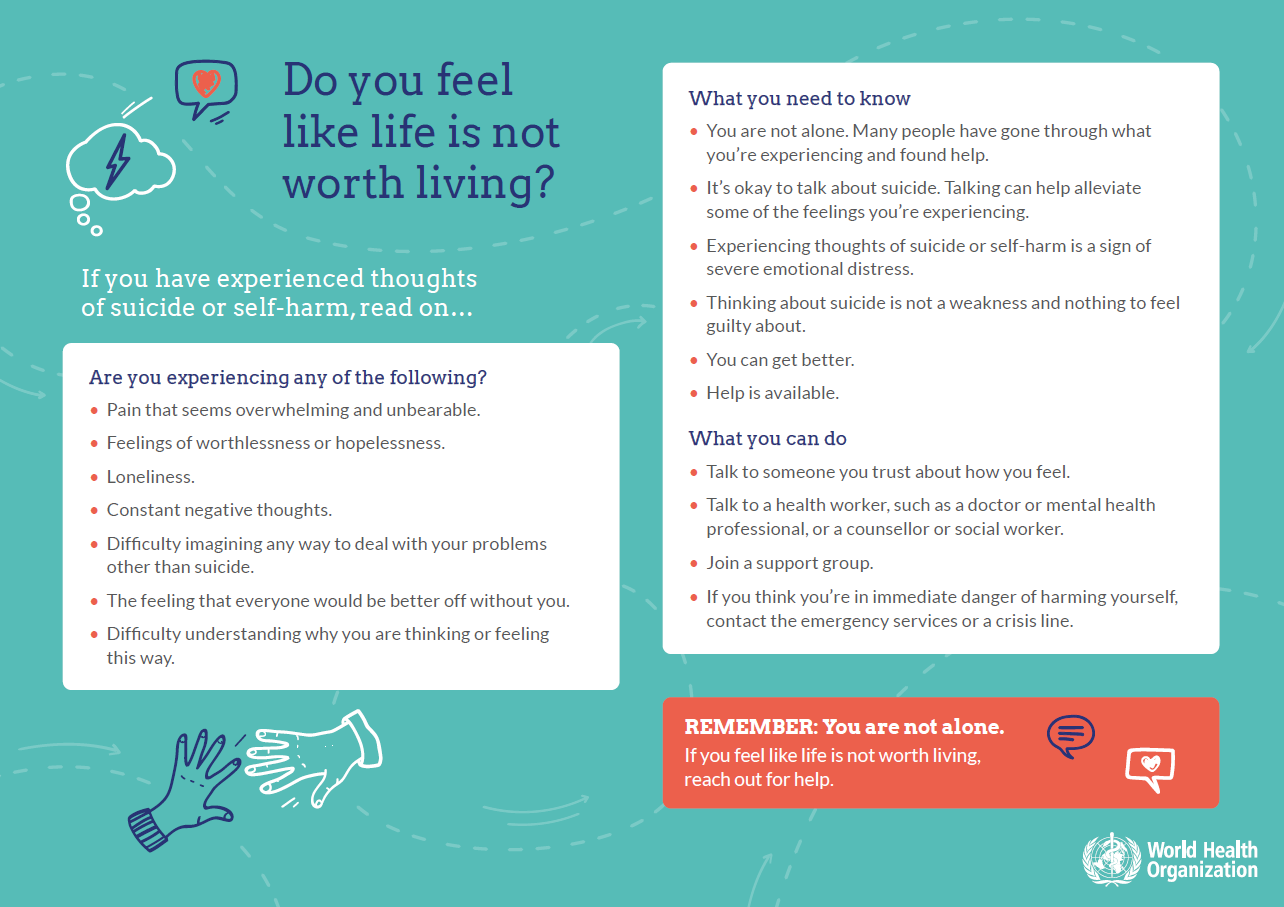Suicide prevention

Suicide
Suicide is a global public health problem. Every year more than 700 000 people die as a result of suicide. The majority of these deaths (77%) occur in low- and middle-income countries. Beyond this, suicide has a ripple effect that impacts on societies, communities, friends and families who have lost a loved one to suicide.
There are indications that for each person who dies of suicide there are likely to be more than 20 others who attempt suicide. This ratio differs widely by country, region, sex, age and method.
Access to emotional support at the right time and restricting access to highly lethal means of suicide to buy time while dealing with suicidal feelings can prevent suicide. Effective interventions exist. WHO’s LIVE LIFE approach recommends four key interventions which have proven to be effective:
- limit access to the means of suicide (e.g., restrictions on toxic pesticides and firearms);
- interact with the media for responsible reporting of suicide;
- foster socio-emotional life skills in adolescents; and
- early identification, assessment, management and follow up of anyone who is affected by suicidal behaviours.
The foundational pillars of the interventions for suicide prevention are situation analysis, multisectoral collaboration, awareness raising, capacity building, financing, surveillance, monitoring and evaluation.
Talking openly about suicide can give a person other options or the time to rethink his/her decision, thereby preventing suicide.
Studies suggest that people who are suicidal are often ambivalent about living or dying and they look for relief from their pain. Someone may act impulsively and die a few days later, even though they would have liked to live on. Access to emotional support at the right time may prevent suicide. Studies with individuals who have made near-fatal suicide attempts indicate that many of them are pleased later on that they survived.
Many people who are suicidal do not have a mental health condition, and many people with mental health conditions do not have a wish to die. In suicidal crisis situations, many underlying and contributing factors need to be considered – such as acute emotional distress, chronic pain, experience of violence and social determinants.
Suicidal behaviours are not easy to explain. They are never the result of a single factor or event. The factors that lead individuals to take their own life are multiple and complex. Health, mental health, stressful life events, and social and cultural factors need to be considered when trying to understand suicidal behaviour.


Source: WHO official website




